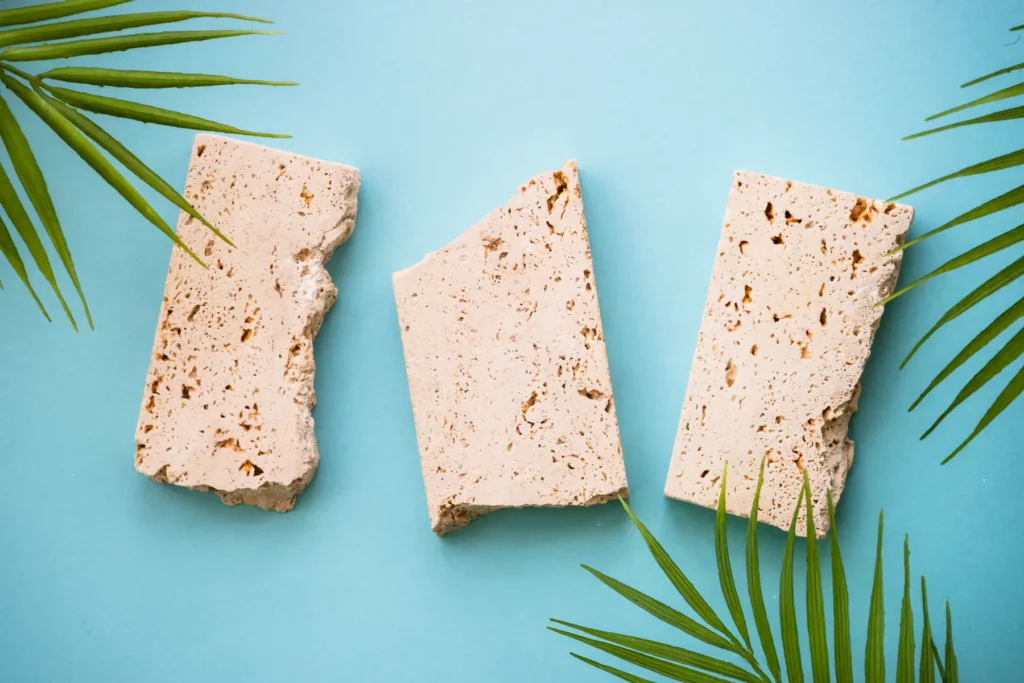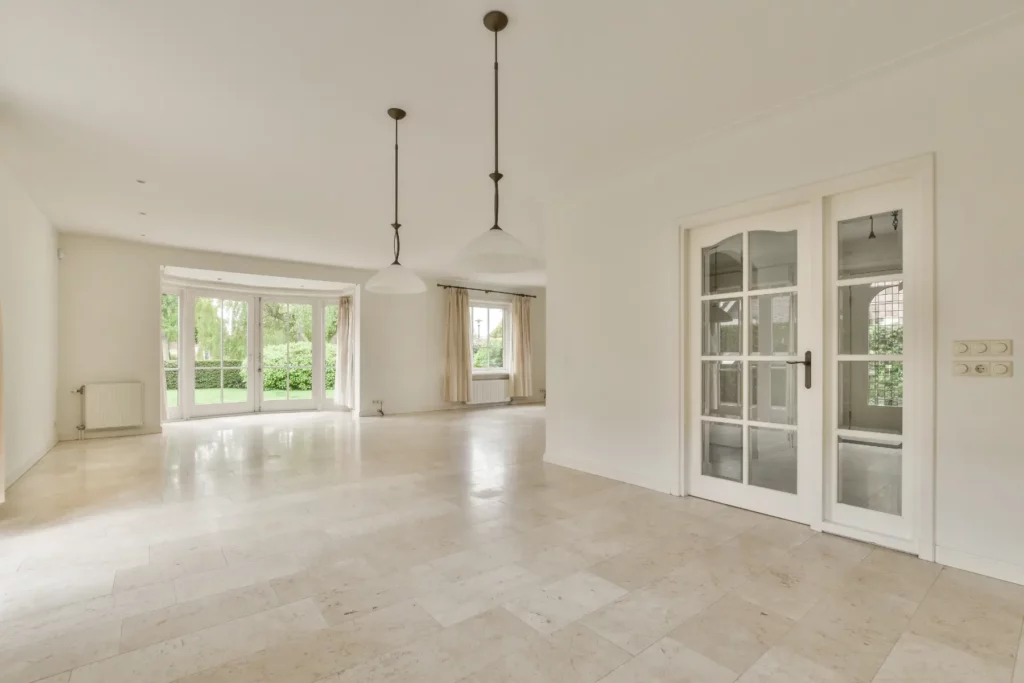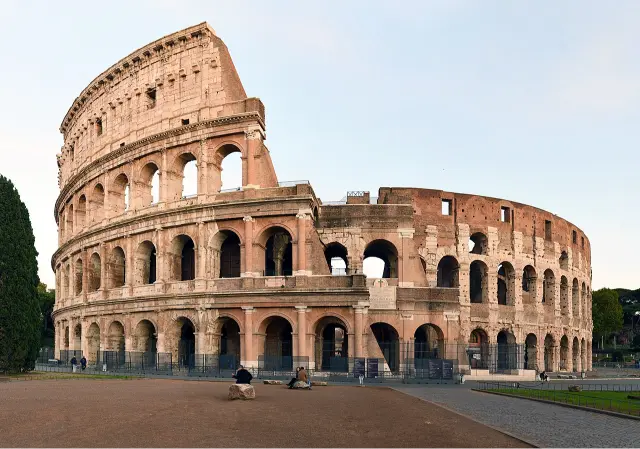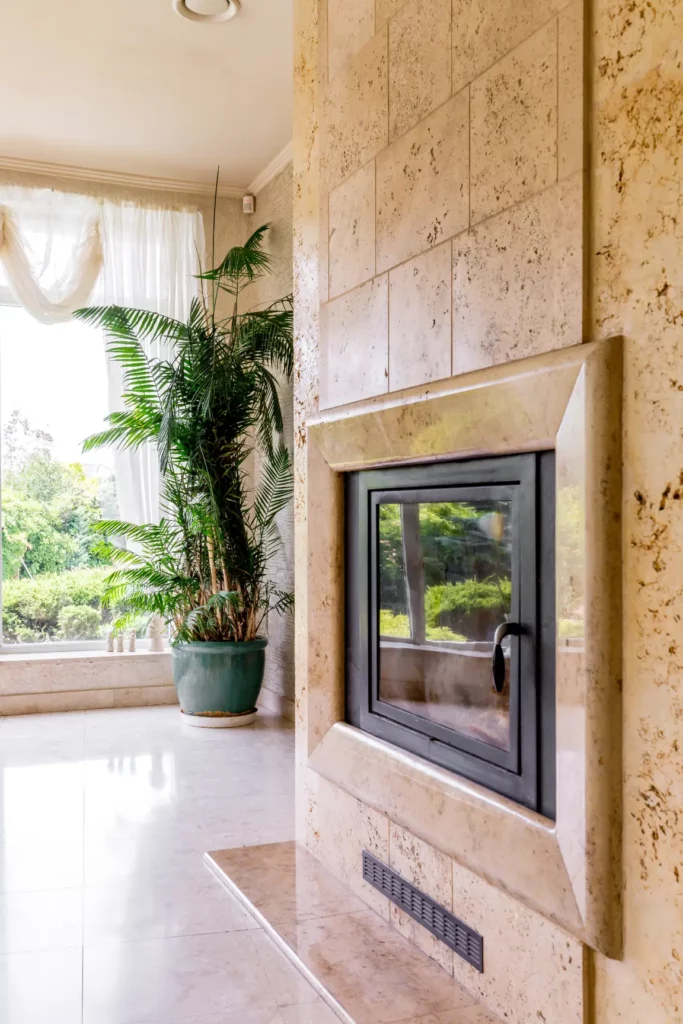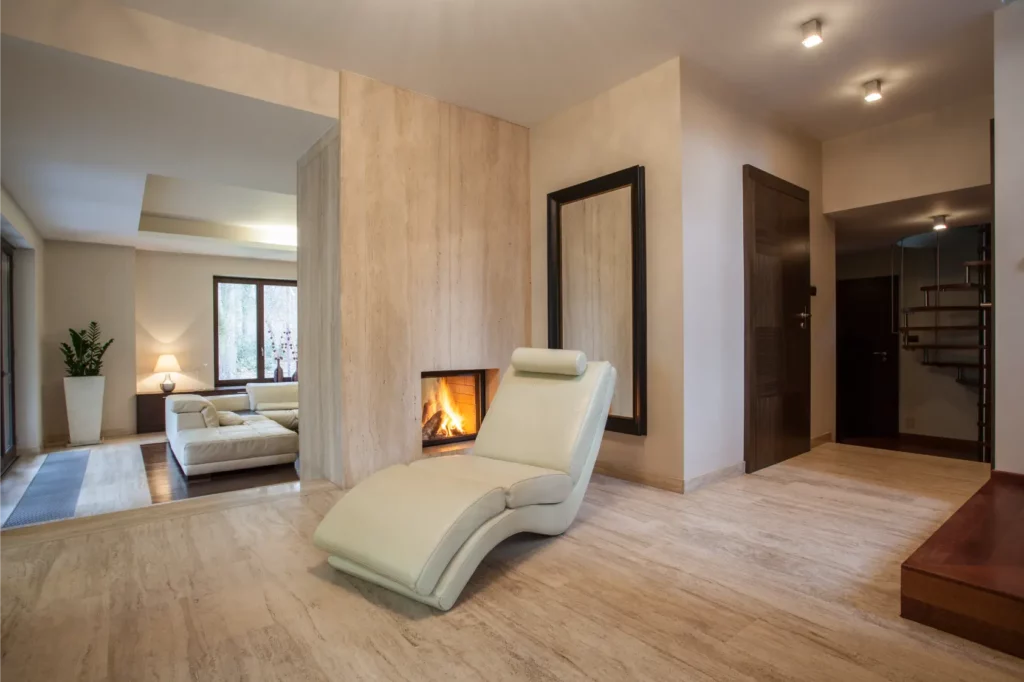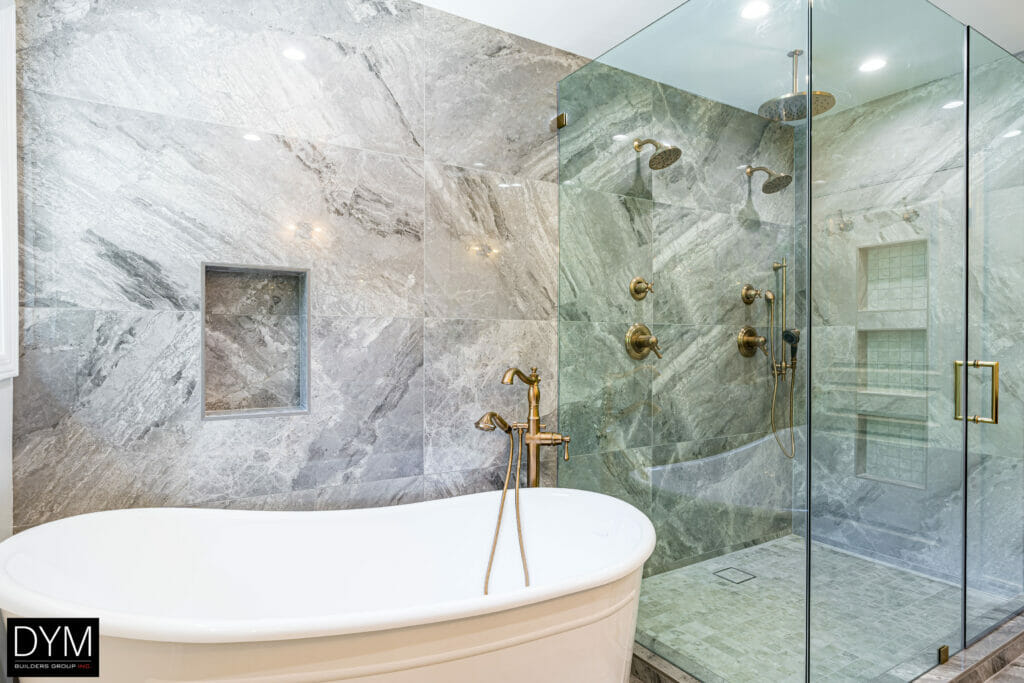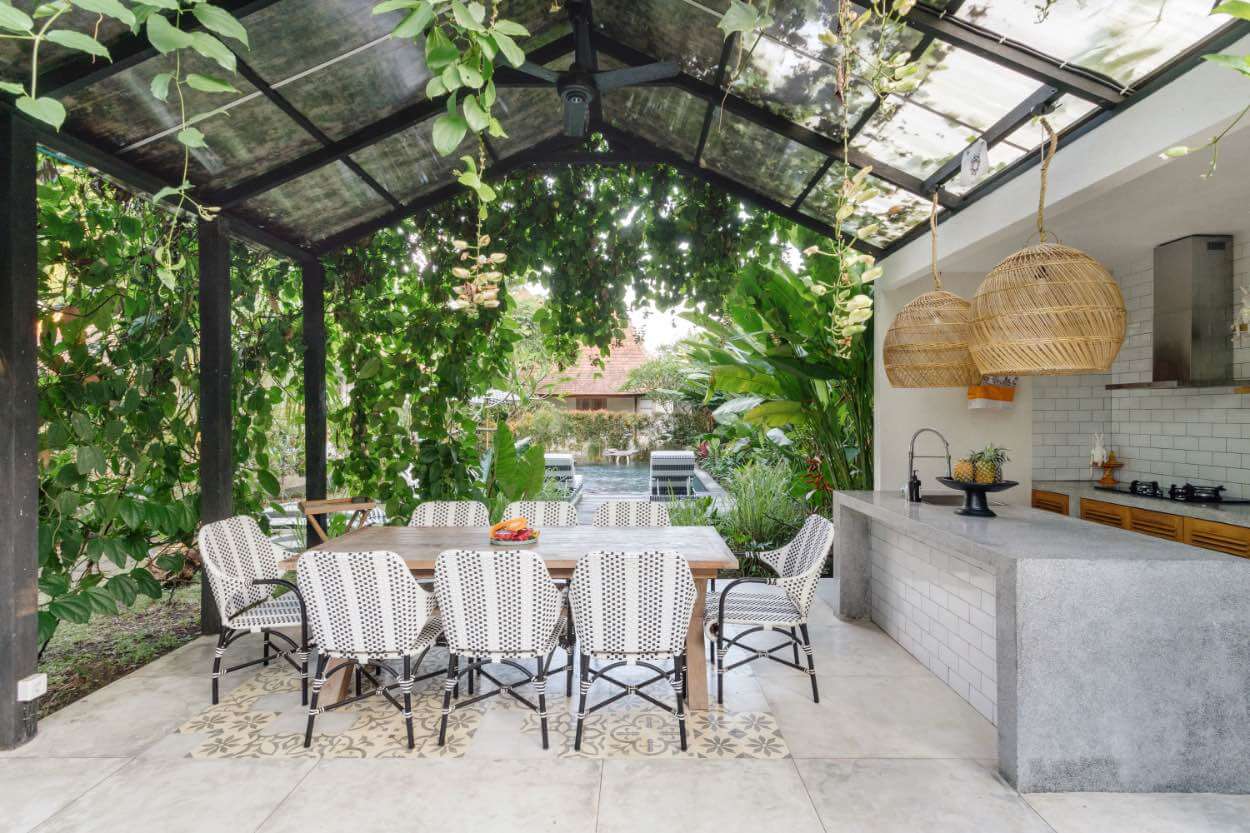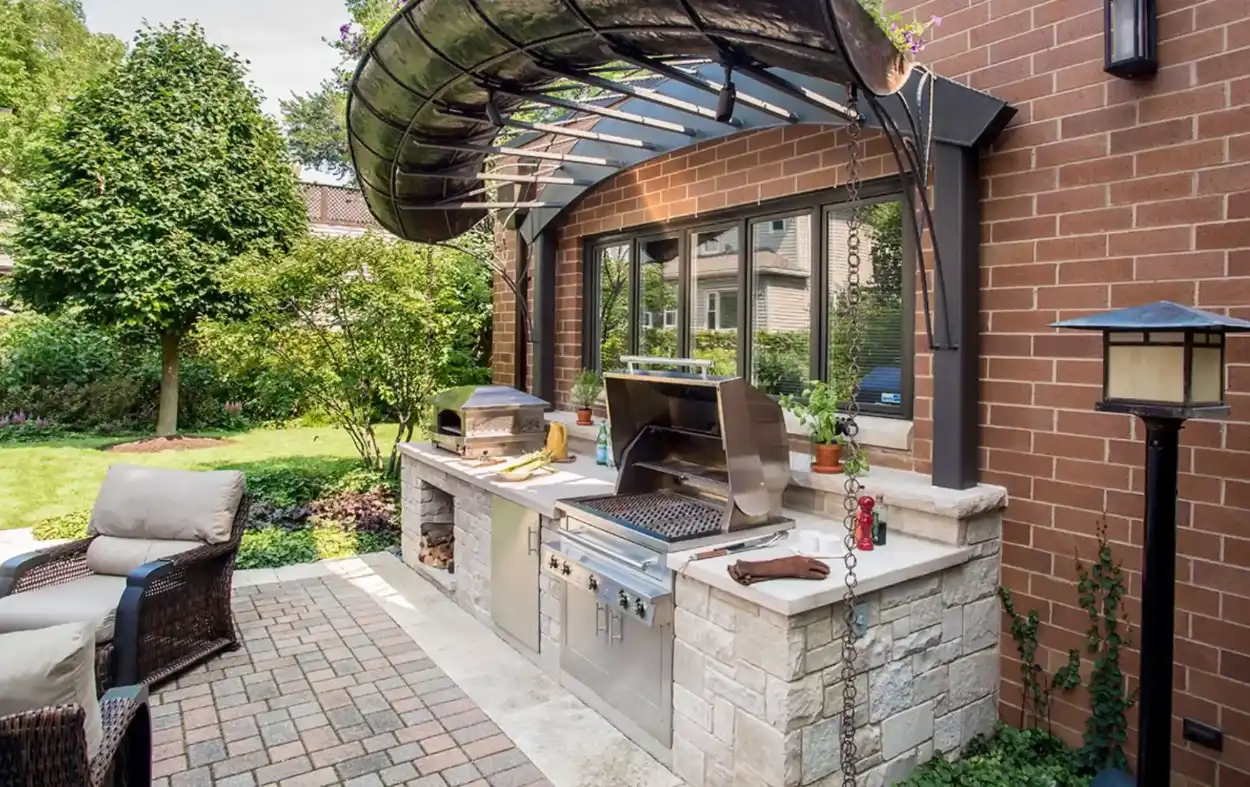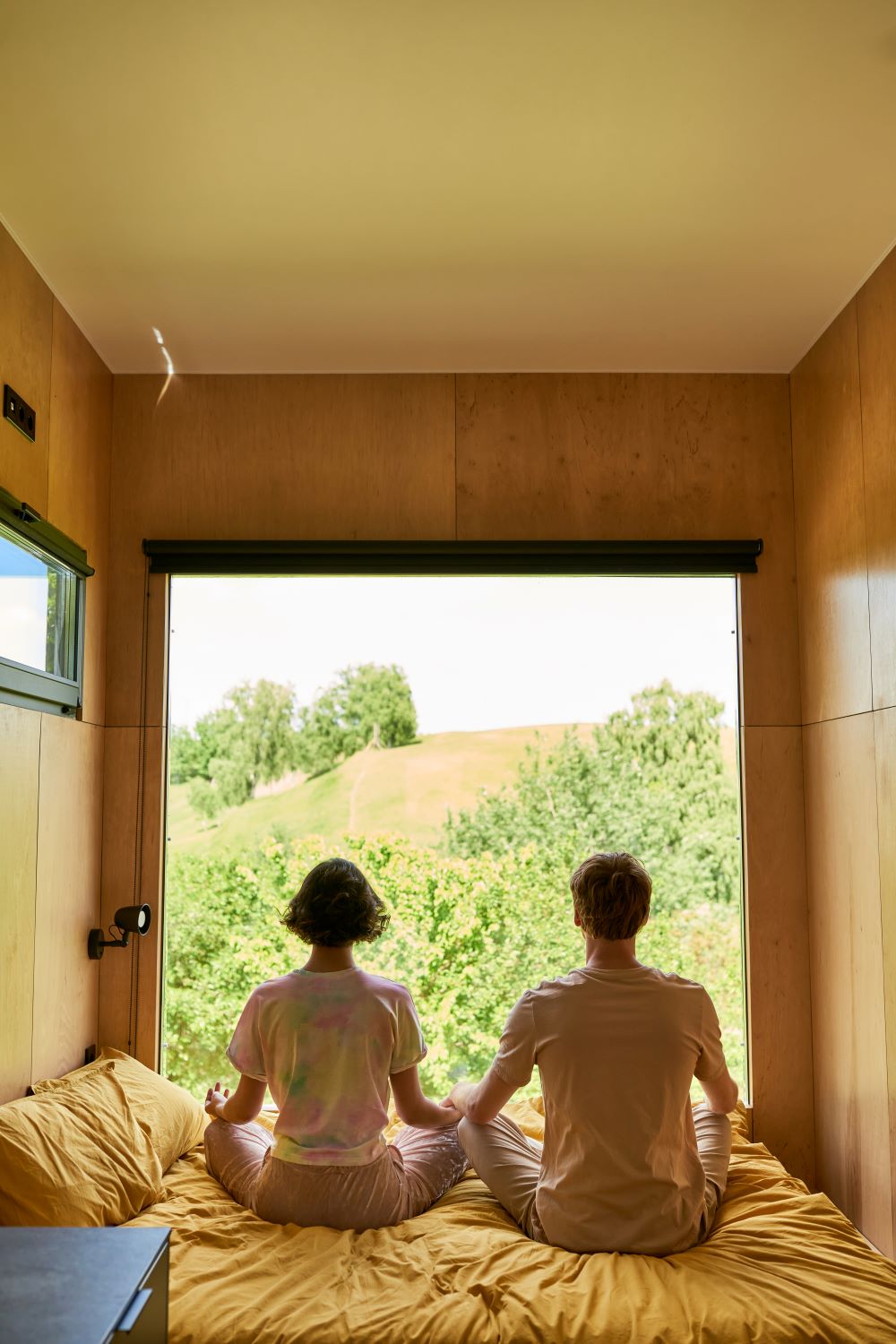Travertine Tiles: Timeless Elegance in Stone
Bringing the Beauty of the Ancient World into Modern Spaces
Travertine tiles, with their rich history and natural beauty, have been a favorite for architects and designers for centuries. These tiles not only carry the legacy of ancient civilizations but also add a touch of elegance to modern designs. This article delves into the fascinating world of travertine tiles, exploring their history, manufacturing process, decorative uses, notable examples, material characteristics, and their unique contribution to the ambiance of interior design.
A Journey Through Time: The History of Travertine Tiles
Travertine’s journey begins in the heart of hot springs and limestone caves, where it is formed through the precipitation of calcium carbonate. This process, taking thousands of years, results in the beautifully textured and layered stone known as travertine. Historically, travertine was extensively used by the Romans, most famously in the Colosseum, the largest building in the world constructed primarily of travertine. This use highlights its durability and the esteem in which it was held by ancient architects.
From Earth to Art: The Making of Travertine Tiles
The production of travertine tiles begins with the extraction of travertine blocks from quarries, mainly found in Italy, Turkey, and Iran. These blocks are then sliced into slabs and eventually cut into tiles. The tiles are filled and polished or honed to achieve a smooth finish, or they can be left in their natural, textured state to preserve the stone’s inherent beauty. This process emphasizes the natural patterns and variations in color, making each tile unique.
Elegance in Design: Using Travertine in Decor
Travertine tiles offer a versatile palette ranging from warm earth tones to cool silvery hues, making them suitable for a variety of decorative styles. They can be used for flooring, wall cladding, backsplashes, and shower surrounds. The tiles lend a luxurious yet understated elegance to interiors, harmonizing with both contemporary and traditional decor. Their natural texture and color variations can add depth and interest to any space.
Witness to History: Famous Places Featuring Travertine
Beyond the Colosseum, travertine has been used in numerous iconic structures around the world. The Getty Center in Los Angeles showcases travertine’s versatility in a modern context, with its strikingly clean and elegant lines. Additionally, the Sacré-Cœur Basilica in Paris uses travertine to create a sense of serene grandeur. These examples demonstrate how travertine bridges the gap between ancient and modern architectural marvels.
The Substance of Style: Materials and Vibe
Travertine tiles are celebrated not just for their aesthetic appeal but also for their material properties. The stone is naturally porous, which can be advantageous for creating non-slip surfaces but requires sealing for certain applications. When it comes to the vibe, travertine brings a warm, natural, and timeless feel to interior spaces. Its inherent variations in texture and color contribute to creating an inviting atmosphere with a sense of history and permanence.
The Use of Travertine in Contemporary Construction: Blending Tradition with Modernity
Travertine, a natural stone with a rich history dating back to ancient civilizations, has found a prominent place in contemporary construction. Its timeless beauty, coupled with its durability, makes it a preferred material for architects and designers seeking to blend tradition with modernity. This article explores how travertine is being utilized in the construction of today’s architectural marvels, highlighting its versatility, sustainability, and aesthetic appeal.
Versatility in Application
In contemporary construction, travertine’s versatility is fully leveraged to suit various applications. Beyond traditional flooring and wall cladding, it is increasingly used for facades, landscaping features, and even in innovative furniture designs. Its natural color variations and texture bring warmth and character to exteriors and interiors alike. Architects often choose travertine for its ability to complement glass, steel, and concrete, harmoniously bridging the gap between natural and man-made materials.
Sustainable Building Practices
Sustainability is a major focus in contemporary construction, and travertine scores high on this aspect due to its durability and natural formation. Being a hard-wearing material, it ensures longevity and timeless appeal, reducing the need for replacements or renovations. Additionally, travertine’s thermal properties make it an excellent insulator, helping to regulate indoor temperatures and thus contributing to energy efficiency. The use of travertine supports eco-friendly building practices, aligning with the growing trend towards more sustainable construction methods.
Aesthetic Appeal and Design Flexibility
Travertine brings an unmatched aesthetic appeal to modern construction projects. Its unique patterns and warm hues can add depth and texture to any space, creating visually striking environments. The stone’s natural pores and troughs, which can be filled or left unfilled, offer additional design flexibility, allowing architects to tailor the material’s appearance to the specific demands of each project. This level of customization makes travertine a favorite among designers seeking to create distinctive and elegant spaces.
Examples of Contemporary Usage
Several recent constructions underscore the popularity of travertine in modern architecture. The Oslo Opera House in Norway utilizes travertine to create a stunning interface between the building and its waterfront setting, demonstrating the material’s ability to enhance public spaces. Similarly, the Kimbell Art Museum expansion in Fort Worth, Texas, showcases travertine’s elegance and harmony with natural light, proving its worth in sophisticated cultural institutions.
Challenges and Solutions
While travertine’s benefits are manifold, its use in contemporary construction is not without challenges. The material’s porosity requires it to be sealed, especially in outdoor applications, to prevent staining and weather damage. Moreover, the weight of travertine can be a concern in large-scale applications, necessitating careful structural calculations. However, these challenges are often outweighed by the material’s benefits, and with proper treatment and maintenance, travertine remains a durable and beautiful choice for modern construction.
Choose a Specialized contractor
Selecting a contractor with expertise in travertine, akin to DYM Builders, is vital for the success of any construction or remodeling project involving this exquisite material. These specialists possess a deep understanding of travertine’s unique properties, ensuring proper installation, maintenance, and sourcing of high-quality materials. They can also provide valuable design insights, helping to bring your vision to life with travertine’s timeless elegance. When looking for a contractor, it’s important to research their track record, review their previous projects, read client feedback, discuss their specific experience with travertine, and verify their credentials. If you’re embarking on a project requiring the sophisticated touch of travertine, we offer specialized services that combine expertise in design and installation, ensuring your space is transformed with durability and style. Let us help you achieve the perfect blend of natural beauty and modern craftsmanship.
